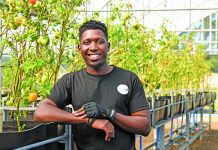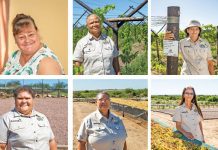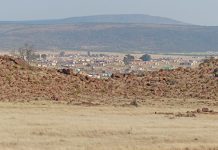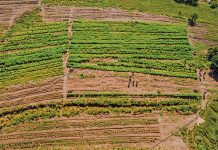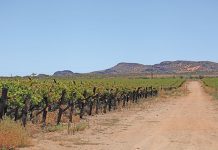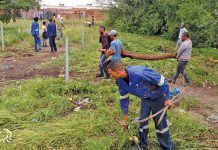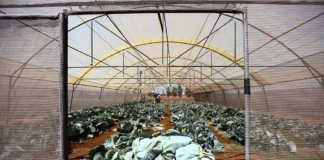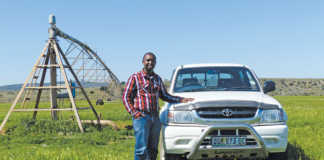
“I don’t have a tertiary education, but I’m striving for excellence in the art of breeding cattle,’’ says 24-year-old Sinako Ntseke, who completed high school at St James Senior Secondary School in Cofimvaba in the Chris Hani district of the Eastern Cape in 2009.
After matric, Sinako returned to his family’s farms and in 2012 joined the Agricultural Research Council’s (ARC) Kaonafatso ya Dikgomo project, which assists emerging farmers in improving the performance of their beef herds.
This year, he won the ARC’s Eastern Cape emerging beef farmer of the year award for his management of 67 Bonsmara-type cattle on Dochandoris, his family’s 285ha farm in the Elliot district. However, this achievement represents only a fraction of his enterprise, which is made up of 120 breeding cows and heifers.
Acquiring land, building a herd
Sinako grew up in the communal areas of Cala in the former Transkei, where he still lives today. Like many rural boys, he was expected to contribute to the management of the family’s livestock.
“One of my jobs was to take care of the lambs rejected by their mothers. That picture stuck with me as I grew up,’’ he recalls. “During a high school interview I said I wanted to be a commercial farmer. The teacher didn’t understand, and I had to explain.’’

Sinako Ntseke
He was determined to follow this passion and the family agreed that after high school he would operate the two family farms – Dochandoris and Donkerhoek (600ha) in the Ida district. Sinako’s father Mlindelwa, a successful shopkeeper and businessman in the former Transkei, had purchased the two properties in 1996 and 2001 respectively.
Both farms had sheep, goats and Nguni cattle. Owing to his work in the Transkei, Mlindelwa could only farm the properties part time and Sinako’s full-time involvement represented a significant opportunity for the family’s agricultural aspirations.
Assistance
In 2011, Sinako was awarded the 340ha farm Glynn in the Gubenxe area near Ugie through the Land Redistribution and Agricultural Development land reform programme. That year, he also benefited from the AsgiSA Eastern Cape Sakhisizwe livestock beef programme, which supplied him with 30 crossbred cows and two bulls via a soft loan arrangement.
In 2014 he benefited from the University of Fort Hare’s and Industrial Development Corporation’s (IDC) Nguni cattle development project. He received 30 Nguni heifers and a bull based on an agreement stipulating that they should be farmed as a pure herd and that, over a five-year period, 30 heifers would be returned for redistribution to other potential project beneficiaries.
In 2010, he received four Bonsmara bulls via the Department of Rural Development and Agrarian Reform’s (DRDAR) bull-swapping programme. These were returned to the DRDAR in 2013 and replaced with two more. Sinako hopes to benefit from this programme again in the future.
Beef production
Sinako’s farming operation has more than 300 cattle and over 400 SA Mutton Merino ewes, supported by a cropping venture of almost 60ha maize, 7ha lucerne and 8ha Eragrostis.
Although the Ntseke family’s beef herd has clearly been influenced by numerous breeds including Brahman, Beefmaster, Nguni and Simbra, it is the Bonsmara that Sinako has decided to focus on.

A self-bred Bonsmara x Beefmaster bull (right) and a Bonsmara bull on Dochandoris. Sinako Ntseke values the Bonsmara breed and has been using Bonsmara bulls in his herd for the past few years.
“I love the Bonsmara because it can adapt to these harsh conditions. The Bonsmara is the future, it’s the way to go,” he says.
Sinako buys mature bulls and weaned bull calves for future use in the herd. “I buy some of my bulls from breeders as weaners, keep them here and groom them to see if they can handle these harsh conditions. If they succeed, I keep them as bulls.”
Bulls, some of which are self-bred, are put to cows in a long mating season from late December to the end of April to ensure improved calving rates. “I believe that it’s better to have a late calf than to not have a calf at all. I’m still chasing the numbers.’’
Heifers are mated for the first time at 18 months after being fed supplementary feed to reach a weight of between 280kg and 300kg. Culling is based on their performance in their first breeding season.
In the 2014/2015 calving season, the 67 cows involved in the ARC’s Kaonafatso ya Dikgomo project achieved a calving rate of 90%, while the entire Ntseke breeding herd achieved a calving rate of 82%.
Calves are weaned at seven months at an average weight of 240kg. Most weaners are marketed to a local abattoir in nearby Elliot, while some are sent to the local Ikhiphu community-driven feedlot. About 30% of all marketable animals are sold into the communal areas either as breeding stock or for traditional purposes, including lobola.
Challenges
Sinako is quick to admit that farming is difficult, and says that the current drought has been is particularly taxing.
“These have been my worst years. The drought has disrupted my plans. My dams are drying up. Imagine having three camps and one dam with water!’’
With drought comes the possibility of fire, and the fear that the flames could destroy winter grazing within a few hours. In 2013 this was a reality for Sinako “It hit us hard, all this went up in smoke,’’ he says, pointing towards the towering Eastern Cape Drakensberg.
He explains that although farming on three separate properties poses logistical challenges, the benefit is that it spreads fire risk. Rural crime poses the greatest threat to the region’s farming, he stresses. Stock theft remains a major problem and he is forced to kraal his sheep every night to protect them from thieves (and predators, including the black-backed jackal). “It’s bad. I have to kraal them and count them every night. The police try to help, but it’s very difficult to farm here.’’
Although thieves prefer sheep, cattle are also stolen occasionally. In 2009, six heifers were taken from Glynn farm, but Sinako recovered them himself two months later.
“I asked people and I offered a reward at schools. One Sunday I received a call [tip-off] and drove to the community. I told the people that the cattle were mine. Nobody said a thing and I told my guys to drive them back.’’
The region has also been rocked by brutal farm murders in current years. Recently Ruben Gouws and his elderly mother Hermien were murdered less than 15km from Dochandoris – a brutal and senseless incident that has deeply affected the community, says Sinako.
“I really love this farm and one day I want to settle down here and start a family. Now the Gouws murder has made me think twice. The farmers here are scared. These farm attacks are motivated by robbery, drug abuse and people that just don’t reason.’’
Despite the challenges, Sinako cannot see himself anywhere else besides farming in the Eastern Cape – especially not in a city.
“When I was in Pretoria to accept my award I couldn’t sleep. There are people and cars going up and down. I just wanted to go home; the mountains were calling me.’’
Phone Sinako Ntseke on 079 718 4459.

